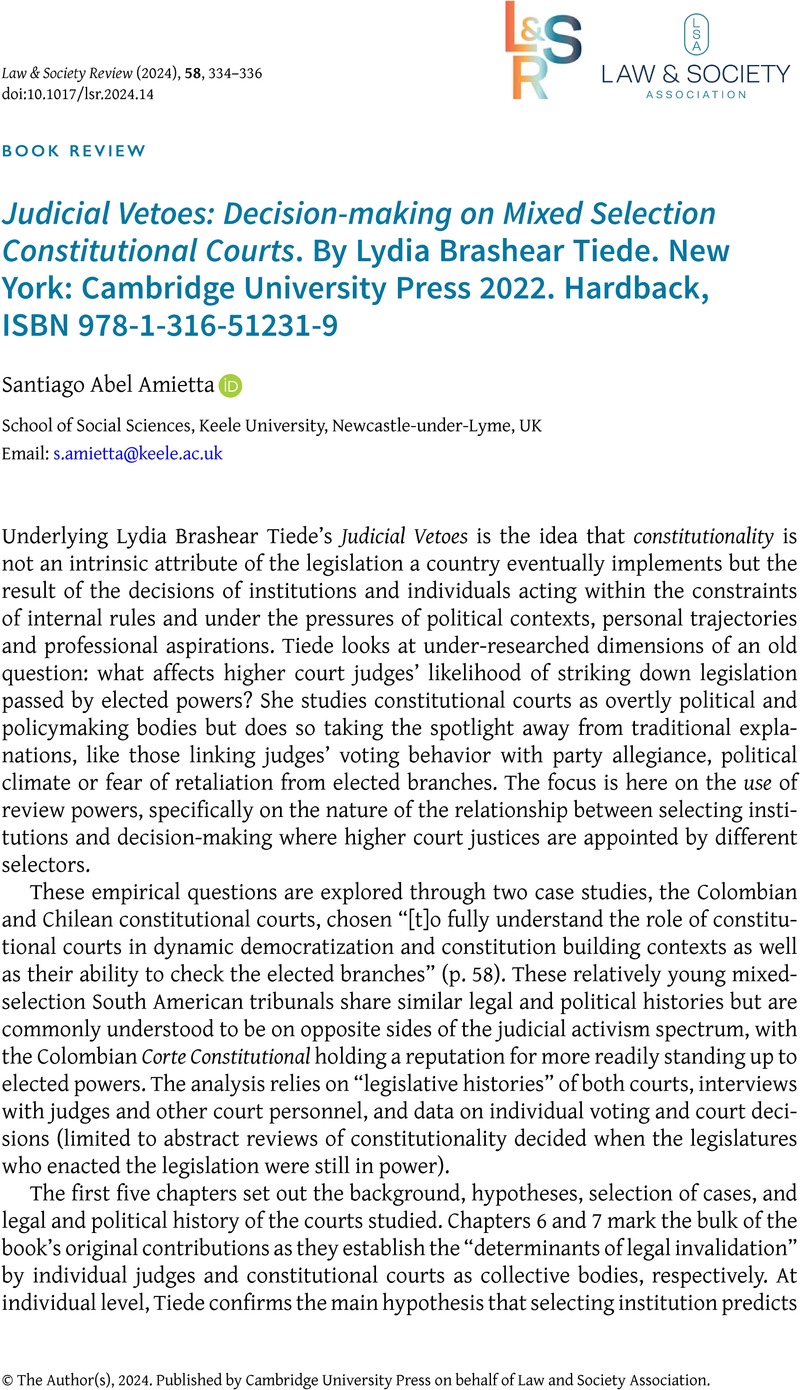No CrossRef data available.
Article contents
Judicial Vetoes: Decision-making on Mixed Selection Constitutional Courts. By Lydia Brashear Tiede. New York: Cambridge University Press 2022. Hardback, ISBN 978-1-316-51231-9
Review products
Judicial Vetoes: Decision-making on Mixed Selection Constitutional Courts. By Lydia Brashear Tiede. New York: Cambridge University Press 2022. Hardback, ISBN 978-1-316-51231-9
Published online by Cambridge University Press: 10 May 2024
Abstract
An abstract is not available for this content so a preview has been provided. Please use the Get access link above for information on how to access this content.

Information
- Type
- Book Review
- Information
- Copyright
- © The Author(s), 2024. Published by Cambridge University Press on behalf of Law and Society Association.


